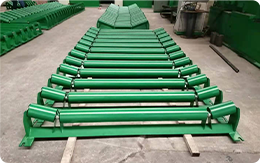 Afrikaans
Afrikaans  Albanian
Albanian  Amharic
Amharic  Arabic
Arabic  Armenian
Armenian  Azerbaijani
Azerbaijani  Basque
Basque  Belarusian
Belarusian  Bengali
Bengali  Bosnian
Bosnian  Bulgarian
Bulgarian  Catalan
Catalan  Cebuano
Cebuano  Corsican
Corsican  Croatian
Croatian  Czech
Czech  Danish
Danish  Dutch
Dutch  English
English  Esperanto
Esperanto  Estonian
Estonian  Finnish
Finnish  French
French  Frisian
Frisian  Galician
Galician  Georgian
Georgian  German
German  Greek
Greek  Gujarati
Gujarati  Haitian Creole
Haitian Creole  hausa
hausa  hawaiian
hawaiian  Hebrew
Hebrew  Hindi
Hindi  Miao
Miao  Hungarian
Hungarian  Icelandic
Icelandic  igbo
igbo  Indonesian
Indonesian  irish
irish  Italian
Italian  Japanese
Japanese  Javanese
Javanese  Kannada
Kannada  kazakh
kazakh  Khmer
Khmer  Rwandese
Rwandese  Korean
Korean  Kurdish
Kurdish  Kyrgyz
Kyrgyz  Lao
Lao  Latin
Latin  Latvian
Latvian  Lithuanian
Lithuanian  Luxembourgish
Luxembourgish  Macedonian
Macedonian  Malgashi
Malgashi  Malay
Malay  Malayalam
Malayalam  Maltese
Maltese  Maori
Maori  Marathi
Marathi  Mongolian
Mongolian  Myanmar
Myanmar  Nepali
Nepali  Norwegian
Norwegian  Norwegian
Norwegian  Occitan
Occitan  Pashto
Pashto  Persian
Persian  Polish
Polish  Portuguese
Portuguese  Punjabi
Punjabi  Romanian
Romanian  Russian
Russian  Samoan
Samoan  Scottish Gaelic
Scottish Gaelic  Serbian
Serbian  Sesotho
Sesotho  Shona
Shona  Sindhi
Sindhi  Sinhala
Sinhala  Slovak
Slovak  Slovenian
Slovenian  Somali
Somali  Spanish
Spanish  Sundanese
Sundanese  Swahili
Swahili  Swedish
Swedish  Tagalog
Tagalog  Tajik
Tajik  Tamil
Tamil  Tatar
Tatar  Telugu
Telugu  Thai
Thai  Turkish
Turkish  Turkmen
Turkmen  Ukrainian
Ukrainian  Urdu
Urdu  Uighur
Uighur  Uzbek
Uzbek  Vietnamese
Vietnamese  Welsh
Welsh  Bantu
Bantu  Yiddish
Yiddish  Yoruba
Yoruba  Zulu
Zulu types of conveyor pulley
Types of Conveyor Pulley A Comprehensive Overview
Conveyor systems are integral components in various industries, from manufacturing to mining, facilitating the movement of materials efficiently over distances. At the core of these systems lies the conveyor pulley, a crucial component that plays a pivotal role in the operation of conveyors. Understanding the different types of conveyor pulleys is essential for selecting the right equipment for specific applications.
1. Drive Pulley
The drive pulley is the heart of any conveyor system, providing the necessary power to move the belt. It is typically positioned at the head of the conveyor, where it is connected to a drive motor. The friction between the drive pulley and the conveyor belt causes the belt to move, making it a fundamental component for the belt's operation. Drive pulleys are often designed with a lagging surface to increase friction and improve traction, ensuring efficient power transfer.
2. Idler Pulley
Idler pulleys are passive components that support the conveyor belt and maintain its alignment as it moves. They are strategically placed along the length of the conveyor to prevent sagging and to help maintain proper tension on the belt. This helps minimize wear and tear on the system, reducing maintenance needs and enhancing overall longevity. Idler pulleys come in various designs, including flat and crowned shapes, depending on the application and the belt being used.
3. Tail Pulley
types of conveyor pulley

As the name suggests, the tail pulley is located at the discharge end of the conveyor system. Its primary function is to provide tension to the belt, which helps maintain the conveyor's integrity and prolong its lifespan. Tail pulleys may also be equipped with a shaft that allows the conveyor to run smoothly during reverse belt operations. This component, though often overlooked, plays a critical role in ensuring the stability and reliability of the conveyor system.
4. Snub Pulley
Snub pulleys are used to adjust the angle of the conveyor belt. Situating a snub pulley close to the drive pulley helps increase the belt wrap angle, enhancing the friction and enabling more effective power transfer. This is particularly useful in applications where the belt needs to change direction or navigate around obstacles. By improving belt adhesion, snub pulleys contribute to the overall efficiency of the conveyor system.
5. Bend Pulley
Bend pulleys are primarily used to change the direction of the conveyor belt. They allow for flexibility in the design of the conveyor layout, accommodating multiple angles and turns. Bend pulleys are essential in complex systems where space constraints necessitate a non-linear path for the belt.
Conclusion
Selecting the right type of conveyor pulley is crucial for the efficient operation of a conveyor system. Each type serves a specific purpose, from driving the belt to supporting its path and adjusting its direction. Understanding the different capabilities of drive, idler, tail, snub, and bend pulleys can help engineers and operators choose the best components for their specific needs, ultimately leading to improved performance and reduced downtime in material handling applications. Choosing the correct pulleys contributes significantly to the overall success of conveyor system operations, making them an essential factor in industrial logistics and productivity.
-
Trusted Conveyor Solutions from Leading Conveyor Idler Roller ManufacturersNewsJun.27,2025
-
Reliable Return Idler Solutions for Efficient Belt Conveyor SystemsNewsJun.27,2025
-
Precision Conveyor Accessories for Streamlined Material HandlingNewsJun.27,2025
-
High-Quality Belt Conveyor Idler Solutions for Efficient Material HandlingNewsJun.27,2025
-
High-Performance Belt Conveyor Pulleys for Reliable Material HandlingNewsJun.27,2025
-
Enhancing Material Handling EfficiencyNewsJun.27,2025





























